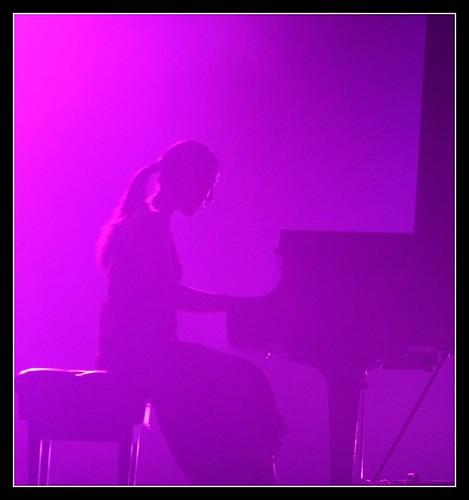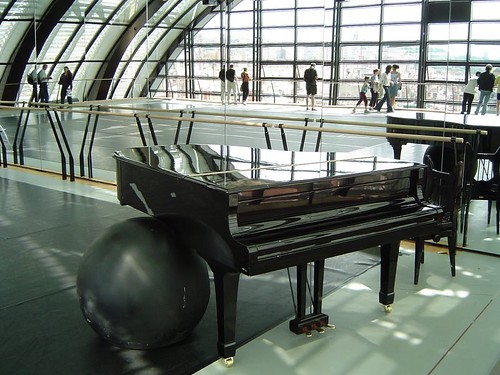1. Dance is hard. – No dancer ever became successful riding on
their natural born talents only. Dancers are artists and athletes. The
world of dance today is akin to an extreme sport. Natural ability and
talent will only get us so far. Dancers must work hard and persevere.
Dancers give years of their lives plus their sweat, tears and sometimes
blood to have the honor and pleasure of performing on stage.
2. You won’t always get what you want. – We don’t always get
the role we wanted, go on pointe when we want, get the job we want, hear
the compliments we want, make the money we want, see companies run the
way we want, etc, etc. This teaches us humility and respect for the
process, the art form and the masters we have chosen to teach us. The
faster we accept this, the faster we can get on with being brilliant.
We’ll never be 100% sure it will work, but we can always be 100% sure
doing nothing won’t work.
3. There’s a lot you don’t know. – There is always more a
dancer can learn. Even our least favorite teachers, choreographers and
directors can teach us something. The minute we think we know it all, we
stop being a valuable asset.
4. There may not be a tomorrow. – A dancer never knows when
their dance career will suddenly vanish: a company folds, career ending
injury, car accident, death…Dance every day as if it is the final
performance. Don’t save the joy of dance for the stage. Infuse even your
routine classroom exercises with passion!
5. There’s a lot you can’t control. – You can’t control who
hires you, who fires you, who likes your work, who doesn’t, the politics
of being in a company. Don’t waste your talent and energy worrying
about things you can’t control. Focus on honing your craft, being the
best dancer you can be. Keep an open mind and a positive attitude.
6.
Information is not true knowledge. – Knowledge comes from
experience. You can discuss a task a hundred times, go to 1000 classes,
but unless we get out there and perform we will only have a
philosophical understanding of dance. Find opportunities to get on
stage. You must experience performance firsthand to call yourself a
professional dancer.
7. If you want to be successful, prove you are valuable. – The
fastest way out of a job is to prove to your employer they don’t need
you. Instead, be indispensable. Show up early, know your material, be
prepared, keep your opinions to yourself unless they are solicited and
above all be willing to work hard.
8. Someone else will always have more than you/be better than you.
– Whether it’s jobs or money or roles or trophies, it does not matter.
Rather than get caught up in the drama about what others are doing
around you, focus on the things you are good at, the things you need to
work on and the things that make you happiest as a dancer.
9. You can’t change the past. – Everyone has a past. Everyone
has made mistakes, and everyone has glorious moments they want to savor.
“Would you keep a chive in your tooth just because you enjoyed last
night’s potato?”
Boston Common TV Series. Dance is an art form
that forces us to concentrate on the present. To be a master at dance we
have be in the moment; the minute the mind wanders, injuries happen. If
they do, see #12.
10. The only person who can make you happy is you. – Dancing
in and of itself cannot make us happy. The root of our happiness comes
from our relationship with ourselves, not from how much money we make,
what part we were given, what company we dance for, or how many
competitions we won. Sure these things can have effects on our mood,
but in the long run it’s who we are on the inside that makes us happy.
11. There will always be people who don’t like you. – Dancers
are on public display when they perform and especially in this internet
world, critics abound. You can’t be everything to everyone. No matter
what you do, there will always be someone who thinks differently. So
concentrate on doing what you know in your heart is right. What others
think and say about you isn’t all that important. What is important is
how you feel about yourself.
12.Sometimes you will fail. – Sometimes, despite our best
efforts, following the best advice, being in the right place at the
right time, we still fail. Failure is a part of life. Failure can be the
catalyst to some of our greatest growth and learning experiences. If we
never failed, we would never value our successes. Be willing to fail.
When it happens to you (because it will happen to you), embrace the
lesson that comes with the failure.
13. Sometimes you will have to work for free. – Every
professional dancer has at one time or another had to work without pay.
If you are asked to work for free, be sure that you are really ok with
it. There are many good reasons to work for free, and there are just as
many reasons not to work for free. Ask yourself if the cause is worthy,
if the experience is worth it, if it will bring you joy. Go into the
situation fully aware of the financial agreement and don’t expect a hand
out later.
14. Repetition is good. Doing the same thing over and over expecting a different result is insane. –
If you keep doing what you’re doing, you’ll keep getting what you’re
getting. If you keep doing the bare minimum of required classes, don’t
complain to your teacher when you don’t move up to the next level. If
you only give the bare minimum in your company, be happy staying in the
corps. If you want to grow beyond your comfort zone, you must push
yourself beyond your self-imposed limitations.

Photo
by Peter Perazio. Taken when Sylvie Guillem was promoted to Paris Opera
Ballet étoile status and is inspired by Béjart’s choréography “la
Luna”. It has appeared in a cut version on the cover of the popular
general audience French magazine, ‘Le Nouvel Observateur.’
15. You will never feel 100% ready. – Nobody ever feels 100%
ready when an opportunity arises. Dancers have to be willing to take
risks. From letting go of the ballet barre to balance, to moving around
the world to dance with a new company, from trusting a new partner to
trying a new form of dance, dancers must have a flexible mind and
attitude as well as body. The greatest opportunities in life force us to
grow beyond our comfort zones, which means you won’t feel totally
comfortable or ready for it.













